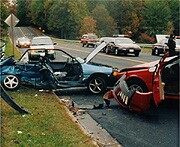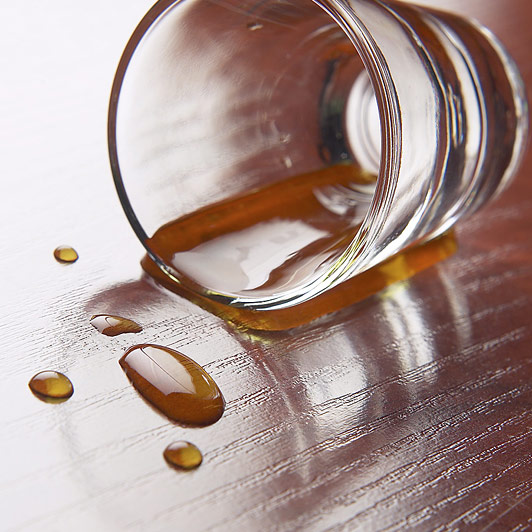
THURSDAY, Dec. 9 (HealthDay News) — Despite massive efforts to curb drunk driving, some 30 million Americans are driving drunk and another 10 million are driving drugged each year, federal officials report.
In fact, in some states the number of drunk and drugged drivers tops 20 percent, according to a report released Thursday by the Substance Abuse and Mental Health Services Administration (SAMHSA).
“This is a pretty high percentage of people that are operating a motor vehicle under the influence of something,” said Peter Delany, director of SAMHSA’s Center for Behavioral Health Statistics and Quality.
There has been a small decline in the number of those driving drunk or drugged, he added. “But, even though we are making advances, we still have a ways to go,” he said. “The reality is any numbers are concerning.”
Other SAMHSA officials noted that thousands of people are killed and maimed yearly by drunk and drugged drivers, even though the entertainment industry, in some movies such as Due Date, portrays drunk and drugged driving as “harmless fun.”
According to the survey, an average of 13.2 percent of people aged 16 and older drove under the influence of alcohol and 4.3 percent drove under the influence of an illegal drug in the past year.
The numbers of drunk and drugged drivers varied from state to state, the survey found. Some states with the highest levels of drunk driving include Wisconsin (23.7 percent) and North Dakota (22.4 percent). The highest rates for drugged driving are in Rhode Island (7.8 percent) and Vermont (6.6 percent).
Those with the lowest rates of drunk driving include Utah (7.4 percent) and Mississippi (8.7 percent). For drugged driving, Iowa (2.9 percent) and New Jersey (3.2 percent) had the lowest levels, the authors found.
In addition, levels of drunk and drugged driving varied among age groups, with younger drivers much more likely to drive while impaired. Drivers aged 16 to 25 had a much higher rate of drunk driving, compared with those aged 26 and older (19.5 percent vs. 11.8 percent). Those aged 16 to 25 also had a higher rate of drugged driving than those aged 26 and older (11.4 percent vs. 2.8 percent).
“Parents and community leaders need to be thinking about what they can do to help young people make good decisions and not make bad decisions about drinking or drugging and driving,” Delany said.
On the plus side, there has been a small drop in the rate of drunk and drugged driving in the past few years.
Data from 2002 to 2005 shows the annual rate of drunk driving has dropped from 14.6 percent to 13.2 percent, compared with data from 2006 to 2009. In the same time periods, the annual rate of drugged driving dropped from 4.8 percent to 4.3 percent, according to the report.
In all, 12 states had a reduction in drunk driving, and seven have seen lower levels of drugged driving.
Why there have been drops in the number of people driving under the influence of alcohol or drugs isn’t clear, Delany said. “I suspect we are having some impact on getting the message out that this is not safe, and I expect a lot of the police enforcement is helping,” he said.
However. one in three car accident deaths (33 percent) were due to driving while high on an illegal drug, according to the U.S. National Highway Traffic Safety Administrations Fatal Accident Reporting System.
These figures are based on dated from the National Surveys on Drug Use and Health, which involves reports from more than 423,000 people aged 16 and over.
Anna Duerr, a spokeswoman for the advocacy group Mothers Against Drunk Driving, said her organization was pleased to see a decline in the numbers of drunk and drugged drivers. “However, the problem is far from solved,” she said. “Nationwide in 2009, 10,839 people were killed in drunk driving crashes.”
In an effort to keep drunk drivers off roadways, MADD is calling on states to pass legislation requiring an ignition interlock for all convicted drunk driving offenders, Duerr said.
This device — which tests for alcohol on a driver’s breath before permitting the car to start — requires the driver to blow into a hand-held sensor unit attached to the ignition. The car will turn on only if the breathalyzer finds the driver’s breath alcohol content is under the legal limit.
Of the states shown in the report to have significant declines in drunk driving rates, four had passed all-offender ignition interlock laws between 2005 and 2009, she noted. Also, the report shows that Wisconsin — currently the only state where driving with a blood alcohol level of .08 is not a criminal offense — has the highest drunk driving rates, Duerr said.
“MADD remains committed to educating the public about the dangers of drunk driving and underage drinking, while providing free support to the victims and survivors of drunk driving crashes,” she said.
More information
For more information on drunk driving, visit MADD.

